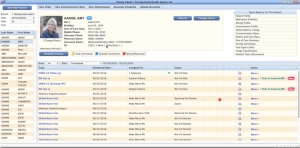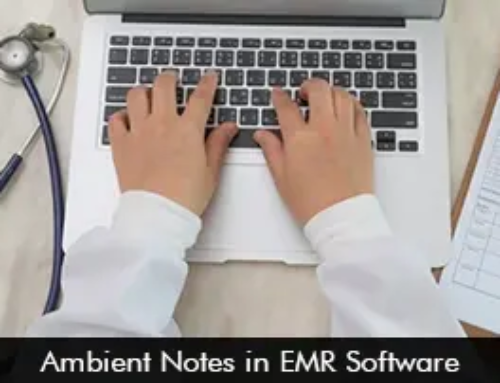Remote patient care has never been easier or more connected. Patients felt isolated, and doctors were usually in the dark about daily progress before EHR software bridged the gap. In this blog post, we explore how Electronic Health Record (EHR) has reshaped home care solutions and enhanced the quality of care.
EHR Software Interoperability and Seamless Data Exchange
One of the key advancements in EHR software for home care is the emphasis on interoperability. In the past, healthcare systems often operated in silos, hindering the seamless exchange of patient information. Modern EHR software breaks down these barriers by allowing different systems to communicate with each other. This is particularly beneficial for home care providers who collaborate with various healthcare entities.
Interoperability between different healthcare providers, labs, and pharmacies, ensures that critical patient data can be accessed and updated in real time. This facilitates more informed decision-making, reduces the risk of errors, and ultimately improves the continuity of care.
Mobile Accessibility and Remote Monitoring
The integration of mobile technology into EHR software has boosted home care. Mobile accessibility allows healthcare professionals to access patient records, update information, and communicate with other members of the care team from anywhere, at any time. This is especially valuable for those delivering care in a home setting, where mobility and flexibility are essential.
Moreover, EHR software now enables remote monitoring of patients. Through connected devices and wearables, healthcare providers can gather real-time data on vital signs, medication adherence, etc. This not only enhances the quality of care but also allows for early intervention.
Personalized Care Plans and Decision Support EHR Software
EHR software also facilitates the development of personalized care plans tailored to the unique needs of each home care patient. By leveraging data analytics, doctors can analyze vast amounts of data to predict potential health issues and recommend personalized interventions.
Decision support tools in EHR software help doctors make well-informed decisions about treatment options, medication adjustments, and care plans. This streamlines the decision-making process and also contributes to a more patient-centered approach to home care.
Enhanced Communication and Care Coordination
Effective communication and care coordination are vital components of successful home care delivery. EHR software facilitates seamless communication among members of the care team, including physicians, nurses, therapists, and caregivers. This is achieved through secure messaging platforms, shared calendars, and collaborative documentation features.
Care coordination is further improved through centralized and up-to-date patient records. All members of the care team access the same set of information, reducing the likelihood of miscommunication and ensuring that everyone involved in the patient’s care is on the same page. This not only enhances the efficiency of home care services but also contributes to a more cohesive and patient-focused care experience.
Patient Engagement and Empowerment Through EHR Software
Modern EHR software goes beyond the management of clinical data; it actively engages patients in their own care. Patient portals and mobile applications linked to EHR systems empower individuals to access their health information, schedule appointments, and communicate with their care team.
This level of patient engagement fosters a sense of responsibility for one’s own health, leading to better adherence to treatment plans and improved health outcomes. Additionally, patients and their families actively participate in shared decision-making, collaborating with healthcare professionals to set realistic goals and preferences for their home care.









